Cerro Pintados, nestled in the arid landscapes of the Atacama Desert in Chile, is a site of great historical significance. Known for its geoglyphs, the site features over 400 figures spread across the slopes of the hills. These large designs, created by removing the top layer of soil to reveal the lighter soil beneath, depict a variety of subjects, including humans, animals, and geometric shapes. The geoglyphs are believed to date back to between 500 and 1450 AD, created by the indigenous peoples of the region. Cerro Pintados offers a window into the cultural practices and social organization of these pre-Columbian societies.
Get your dose of History via Email
Historical Background of Cerro Pintados
The discovery of Cerro Pintados dates back to the 19th century when explorers and archaeologists began to take interest in the Atacama Desert’s cultural treasures. The geoglyphs were created by the indigenous peoples of the region, although the exact identity of these groups remains a topic of research.
The Tiwanaku and Inca civilizations are among those believed to have influenced the area. These cultures had a strong presence in the Andean region and may have contributed to the creation of the geoglyphs. The purpose of the figures is still under study, but they likely had ceremonial or wayfinding significance.
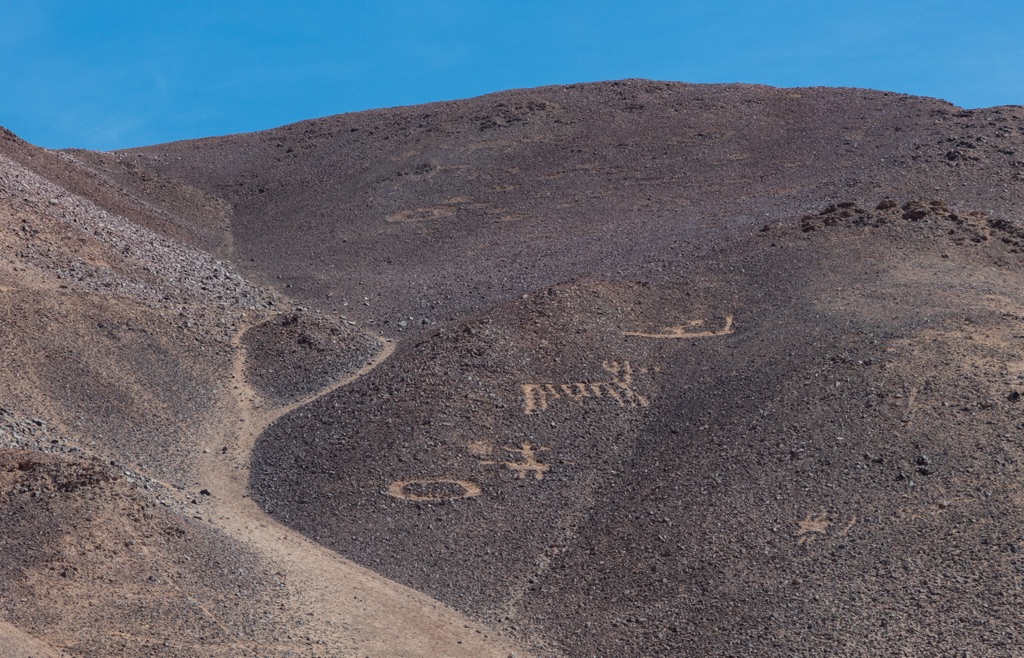
The geoglyphs have withstood the test of time, thanks to the dry climate of the Atacama Desert. This has allowed for their preservation, providing a unique opportunity for contemporary study. The site has not been inhabited in modern times, maintaining its status as a historical and archaeological treasure.
Cerro Pintados was officially recognized for its cultural importance when it was included in the Pampa del Tamarugal National Reserve. This inclusion has helped protect the site and promote its study. The geoglyphs have become an important part of Chile’s cultural heritage and are a significant attraction for both researchers and tourists.
The site’s discovery and subsequent research have shed light on the complex societies that once thrived in the region. While the creators of Cerro Pintados may not have left written records, their artistry speaks volumes about their worldview and the importance of this site in their cultural landscape.
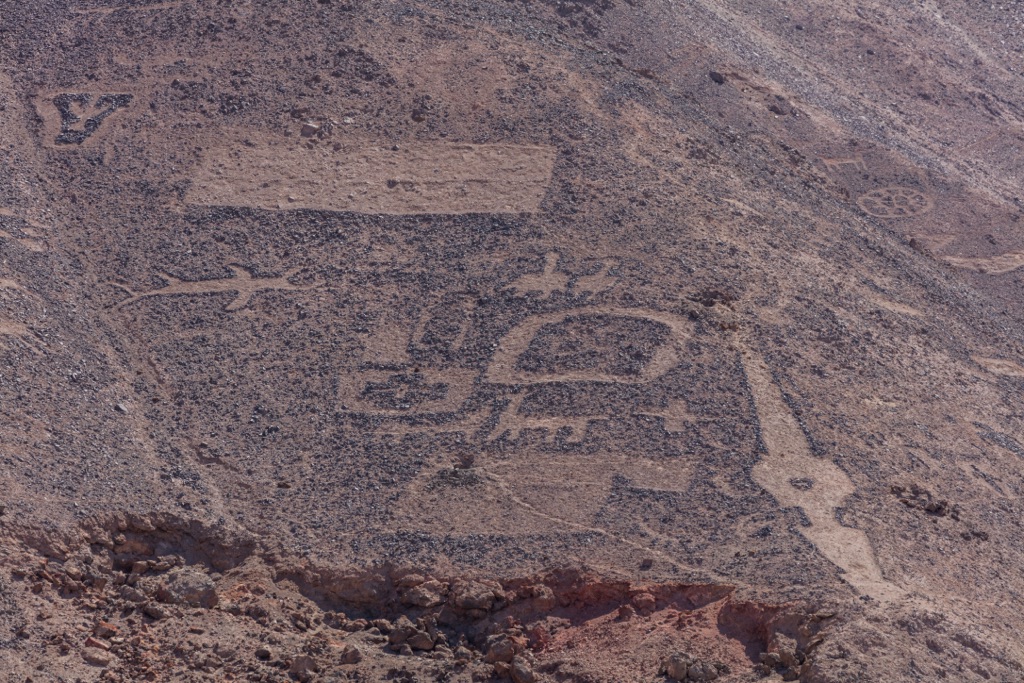
About Cerro Pintados
Cerro Pintados is renowned for its extensive collection of geoglyphs, which are large designs etched onto the landscape. The geoglyphs were created by removing the dark stones on the surface to reveal the lighter soil beneath. This contrast creates the striking figures visible from great distances.
The designs vary widely, with some depicting humans, animals, and a range of geometric and abstract shapes. The figures range in complexity from simple lines to intricate patterns, showcasing a high level of artistic skill and understanding of the landscape.
The methods of construction and the materials used were simple yet effective. The creators used tools to scrape away the surface and may have used wooden frames to help outline the larger and more complex designs. The geoglyphs’ size suggests that their creation was a communal effort, requiring coordination and planning.
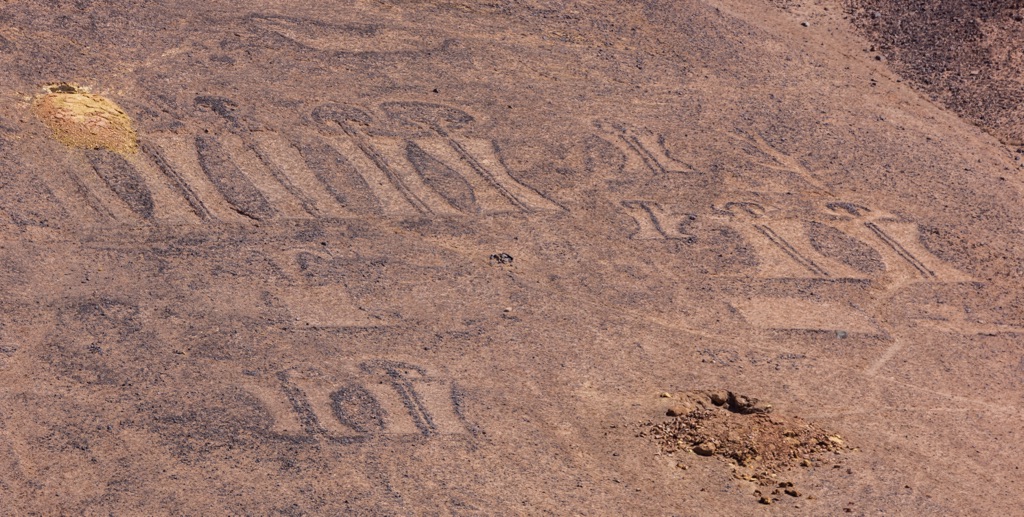
Architectural highlights of the site are not limited to the geoglyphs themselves but also include the surrounding landscape. The natural features of the Atacama Desert play a crucial role in the visibility and preservation of the geoglyphs.
The site’s location on the hillsides allows for an excellent vantage point, suggesting that the geoglyphs were meant to be seen by those traveling through the desert. The use of natural contours and the strategic placement of the figures demonstrate a sophisticated level of environmental integration.
Theories and Interpretations
Several theories exist about the purpose and meaning of the geoglyphs at Cerro Pintados. Some researchers suggest they served as celestial markers, aligning with astronomical events. Others believe they were part of religious or ceremonial practices.
The mystery of the geoglyphs is compounded by the lack of written records from the time of their creation. This has led to a reliance on archaeological evidence and comparison with other geoglyphs in the region to piece together their story.
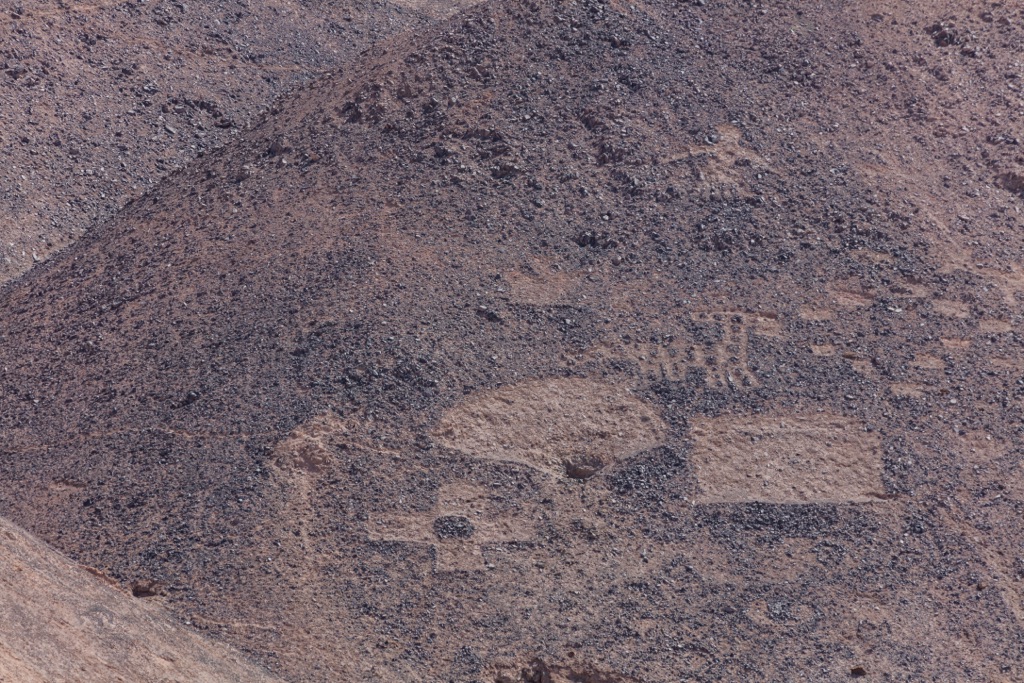
Interpretations of the figures have had to be matched with historical records from later periods and with the oral traditions of indigenous peoples. This has provided some context but also leaves much to the imagination and scholarly debate.
Dating of the geoglyphs has been carried out using various methods, including relative dating techniques such as examining the patina on the rocks. These studies have helped establish a rough timeline for the creation and use of the site.
Despite the ongoing research, Cerro Pintados remains an enigmatic testament to the region’s pre-Columbian history. The site continues to captivate scholars and visitors alike, offering more questions than answers about the ancient peoples of the Atacama Desert.
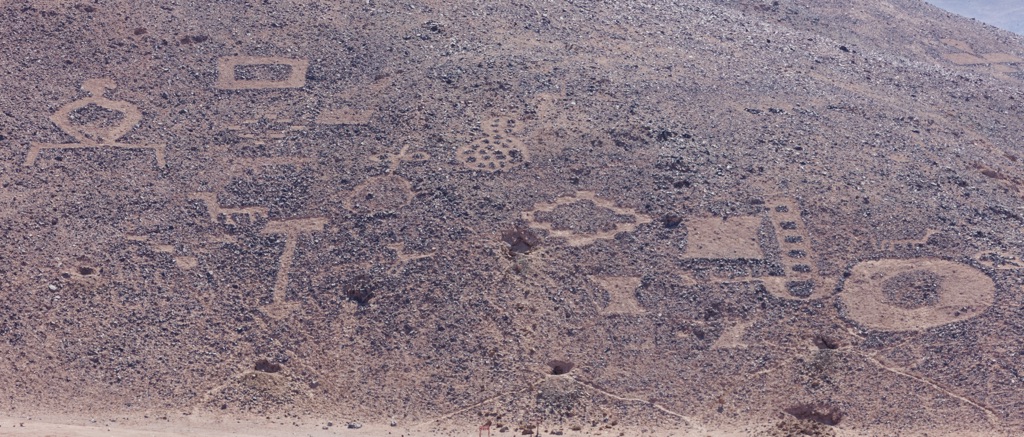
At a glance
Country: Chile
Civilization: Indigenous peoples of the Atacama region, influenced by Tiwanaku and Inca cultures
Age: 500 – 1450 AD

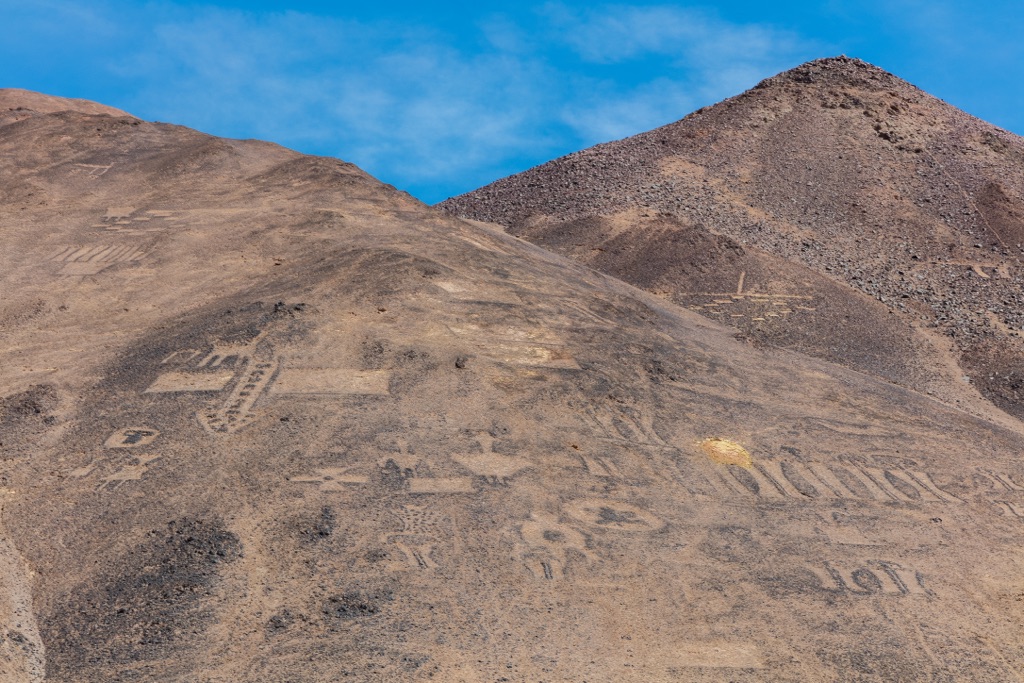
Looks like roadsigns providing direction , distance , facilities , storage , dwellings and food , South of the Border advertising for incoming aircrafts ,You know Pedro says ,Get some chili today and hot tamales .